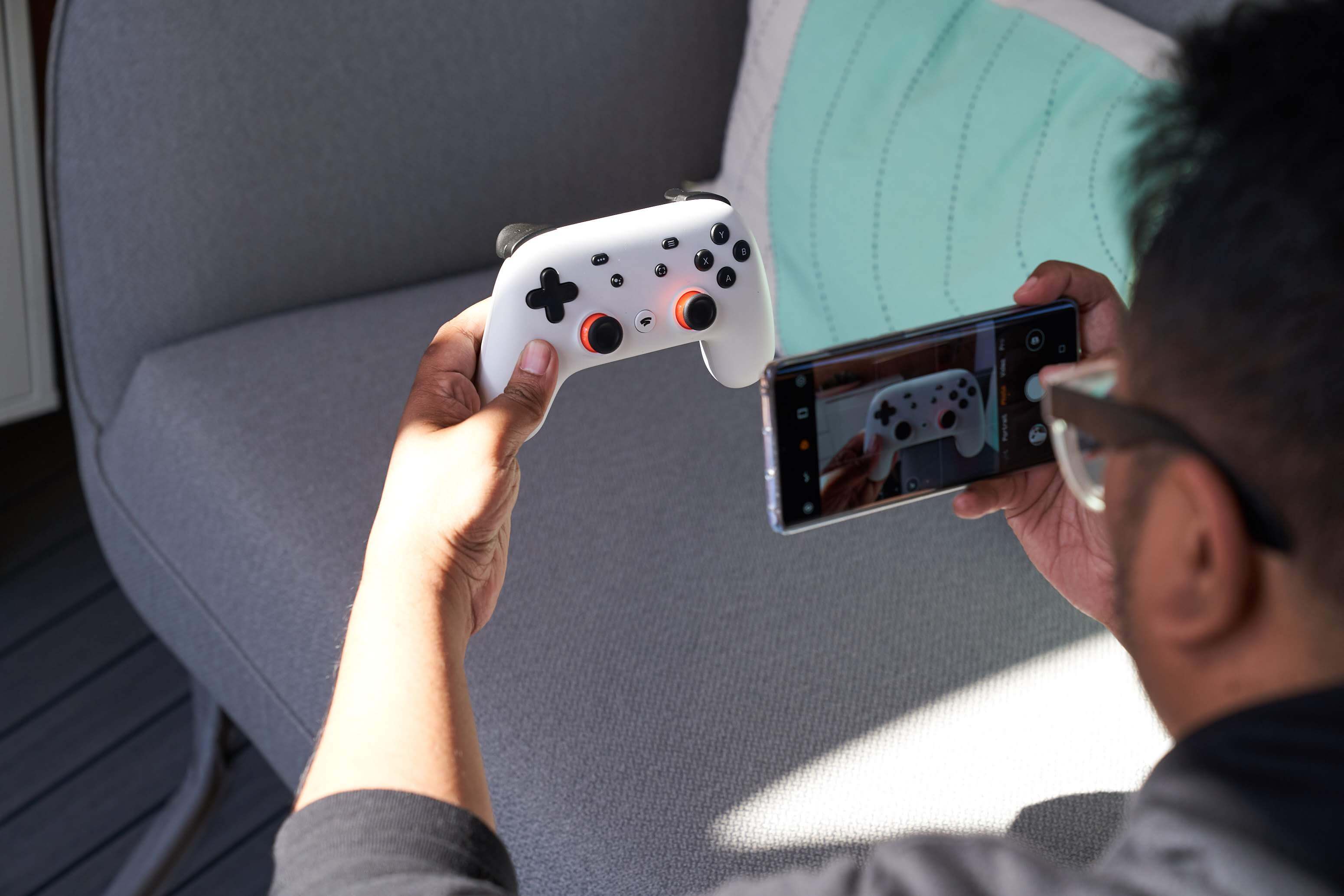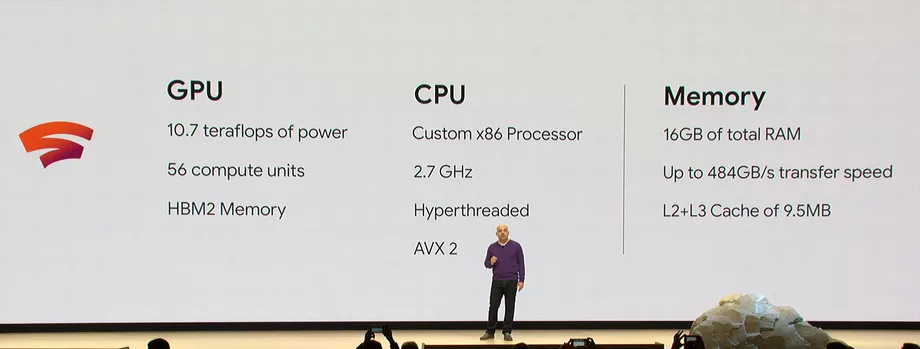Cutting corners: When Google announced their cloud-streaming Stadia platform in March, they promised HDR 4K 60 fps gameplay powered by AMD processors and GPUs. On the premise that the 2.7 GHz CPU was somewhat underpowered for 4K, fans had hoped the GPU would make up for it by utilizing AMD’s upcoming 7nm Navi platform, but it seems that isn’t the case.

This time, Google has spilled the beans themselves by listing Stadia in Khronos’ Vulkan API conformant products list as “Google Games Platform Gen 1 (AMD GCN 1.5).” GCN, or Graphics Core Next, is AMD’s base GPU architecture and instruction set that their GPUs are built on. GCN 1.3 was the R9 Fury series, GCN 1.4 was the RX 400 series and GCN 1.5 is Vega. The Radeon VII brought them to 1.5.1, and Navi is expected to stay at 1.5.1 or more likely start the 1.6 family. GCN 1.5 limits Stadia to 14nm Vega.
During the Stadia announcement, Google revealed five facts about the GPU they’re using: it will have 10.7 TFLOPS, 56 compute units, HBM2 memory running at up to 484 GB/s, and 8 GB of memory. Knowing that the GPU must be based on a Vega product, it seems the most likely candidate is the Vega 56, which also has 8 GB of HBM2 memory and 56 compute units. While the Vega 56 was only equipped with 410 GB/s memory, Google appears to have chosen to upgrade it to the 484 GB/s memory Vega 64 uses.

While Vega 56 has only 8.3 TFLOPS while running at its 1,156 MHz base clock, to reach 10.7 TFLOPS it would need to run at 1,493 MHz, just a hair above the rated 1,471 MHz boost clock. It still seems a little surprising that Google would choose one of the hottest and most power-hungry GPUs available for its data centers, but perhaps AMD has found a way to optimize it for cloud workloads.
Assuming that Stadia’s GPU is based on the Vega 56, then Google’s claims of 4K 60 fps gameplay look a little dubious. In TechSpot’s testing, Vega 56 reaches an average of 43 fps across our 25 game test suite with only Overwatch, Quake Champions, Hitman and Doom breaking the 60 fps barrier. Even with the upgrades, Stadia’s 4K 60 fps content will probably be limited to esports and popular battle royale titles.
https://www.techspot.com/news/80137-google-stadia-expected-use-14nm-vega-gpus.html